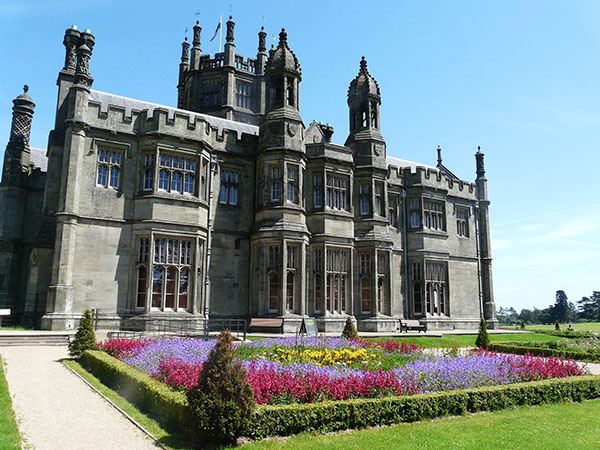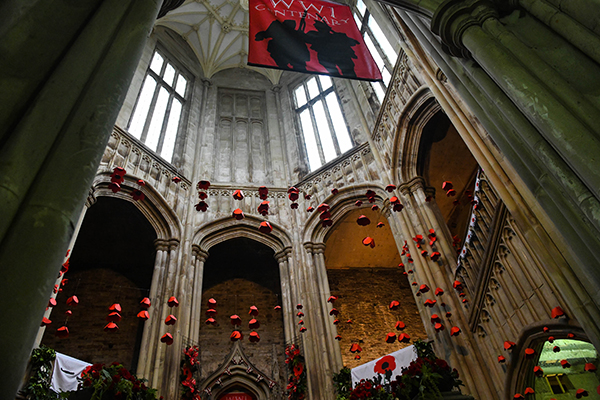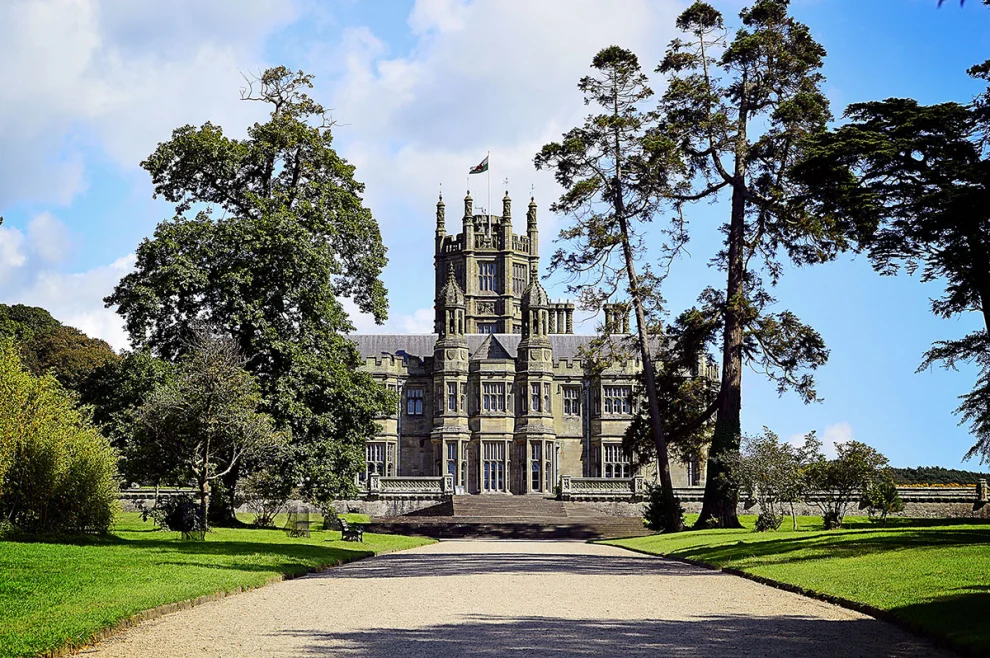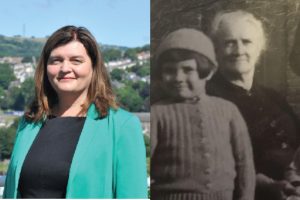MARGAM CASTLE’S history is a fascinating story of rebellion, destruction, and perhaps even some supernatural guests.
The 850 acre country estate situated two miles east of Port Talbot on the narrow coastal plain, set on the southern slopes of Mynydd Margam.
Its history can be traced back to pre-historic times, Bronze and Iron Age relics abound the area, and evidence exists of Roman and extensive Celtic occupation. For example, the deer herd was probably introduced by the Romans.
It has been a place of particular religious importance throughout its history. The Norman Abbey, founded in the mid 12th Century was, until its dissolution at the hands of Henry VIII, a religious centre of major importance in South Wales.
Following the Dissolution, successive owners built and rebuilt their houses on the Abbey site.
The surviving buildings form a unique record of its historical and architectural development.
In the late 18th century considerable redevelopment took place, the area was laid out on classical lines as parkland and the famous Orangery built which remains one of the largest and most outstanding buildings of its kind in the country.
The remains of the Abbey are extensive, the ruined Chapter House being of exceptional architectural quality.
The castle in all its magnificence is an impressive architectural feat, although it is in fact no more than a large country house built during the Gothic Revival. It was designed by Thomas Hopper on behalf of Britain’s wealthiest “commoner”, Christopher Rice Mansel Talbot.
The house was built between 1830-1840, which is seen as a “two-finger salute” to the British government for not giving Talbot an official title sooner. In 1948, he did finally receive the title of Lord Lieutenant of Glamorgan.
Talbot’s only son, Theodore, and heir to the estate died in a hunting incident in 1876. Thus the castle was left to his daughter Emily Charlotte Talbot, who was a spinster.
Upon her death it was handed to another Talbot family member, where it remained until 1941. It was then sold to David Evans-Bevan, he never lived in the house and it fell into disrepair.

The house had provided a picturesque backdrop for American Army General Eisenhower to rally his troops ahead of the D-Day landings during the Second World War.
According to the South Wales Evening Post in September 1972, they highlighted the local council as being interested in the property.
The article read: “It is perhaps natural with the historical background and part which Margam has played in local history over the centuries that rumour should associate the local authority as possible purchasers of the park.”
In 1973 Glamorgan County Council acquired the Estate at the cost of £500,000 paid to David Evans-Bevan.
In the same year Margam Country Park was opened to the public, and Queen Elizabeth II officially opened the Orangery – during her jubilee year, the castle caught ablaze on August 4th 1977.
The fire began around 10am and reportedly lasted for five hours, gutting the interior of the house and damaging the structural integrity of the house, especially the roof.
The fire was believed to have started due to a build up of combustible materials igniting on a summers day due to broken glass.
Under the Local Government Act 1972, Glamorgan County Council was abolished, three new county boroughs were established.
As of the 1st April 1974, West Glamorgan, Mid Glamorgan and South Glamorgan entered into existence.
West Glamorgan inherited Margam Country Park, this institutional reshuffle can be seen as a delay to any restoration works, under the assumption they had plans to restore and protect the house.
Margam Castle became a Grade I listed building in 1975, deemed to be a site of exceptional national, architectural or historic importance. This specific listing covers just 2% of all listed buildings.
Was the building’s listing significant in the fire? According to Swansea council’s website on listed buildings: “Consent is required for all proposals, however minor or apparently insignificant which would affect the character of any part of the interior or exterior of a listed building.”
The castle’s restoration only began following the fire, and many claimed that had the local authorities taken a proactive role in the building’s restoration prior to the fire, the costs would have been greatly reduced.
The condition of the castle’s interior was not unbeknown to those who possessed the ability to alter its redevelopment.
The Margam Park Sub-Committee of the West Glamorgan County Council submitted an application for grant-aid to the Historic Buildings Council in 1977, following the fire.
The north-wing of the castle was re-roofed in 1982.
One of the stained glass windows damaged in 1977 was formally finished in 2006. The restoration of the stained glass only began in 2002, before then the piece of Welsh heritage lay in the vaults of the Swansea Institute.
The window, which depicts the lineage of the Mansel-Talbot family, was first installed in the castle in 1834.

The repair work was carried out by the Architectural Glass Centre, the commercial arm of the institute’s stained glass department, and involved current and former students. The centre’s Alun Adams researched and oversaw the project to restore the 172-year-old window.
He said: “The restoration of the Margam panels has been a major project, always demanding, sometimes frustrating but ultimately extremely rewarding.
“For the first time in many years, possibly within living memory, the panels are complete, undamaged and restored to their former glory.
“A wonderful example of stained glass of the 1830s and one of a very few windows by David Evans of Shrewsbury to be found in south Wales.”
Last year, a horror film, The Haunting of Margam Castle, was released to mixed and poor reviews.
The synopsis of the film reads: “For many years the dark and foreboding Margam Castle, long considered one of the most haunted buildings in the UK, has been abandoned – or so it seemed. An American research team led by Professor Annie Holzer and Doctor Daniel Barron take an interest in the Castle’s macabre history of unexplained deaths and supernatural sightings. They travel to Wales to stay at the Castle, intending to conduct a series of experiments in parapsychology. But when night falls the research team’s study goes awry and they’re forced to fight for their lives when they incur the wrath of the vengeful spirits who live within the walls of Margam Castle.”
Indeed, the location does have a reputation within the ghost hunting community.
It is believed that one frequently encountered spirit is thought to be Robert Scott a gamekeeper that worked at the Castle for many years. It is thought that Scott was murdered by a poacher and his spirit still rages around the grounds today.
Robert Scott has often been seen purposefully ascending the Gothic staircase leading the Castle. His presence has come forward regularly with psychic investigators, all of whom have insisted his spirit is consumed with rage over his unjust killing.
The sound of giggling children is heard frequently through the long corridors and dramatic rooms of the family areas. There have been reports of children in Victorian dress seen drifting in and out of doorways and mischievously moving objects.
The large figure of the blacksmith is also a familiar vision to many of the gamekeepers and gardening staff today who maintain the vast castle grounds. At night the castle’s security guards have reported the noise of running footsteps and chattering voices with no sign of anyone else in the building.
So, if you do visit at night, be sure to keep your wits about you.

















Add Comment